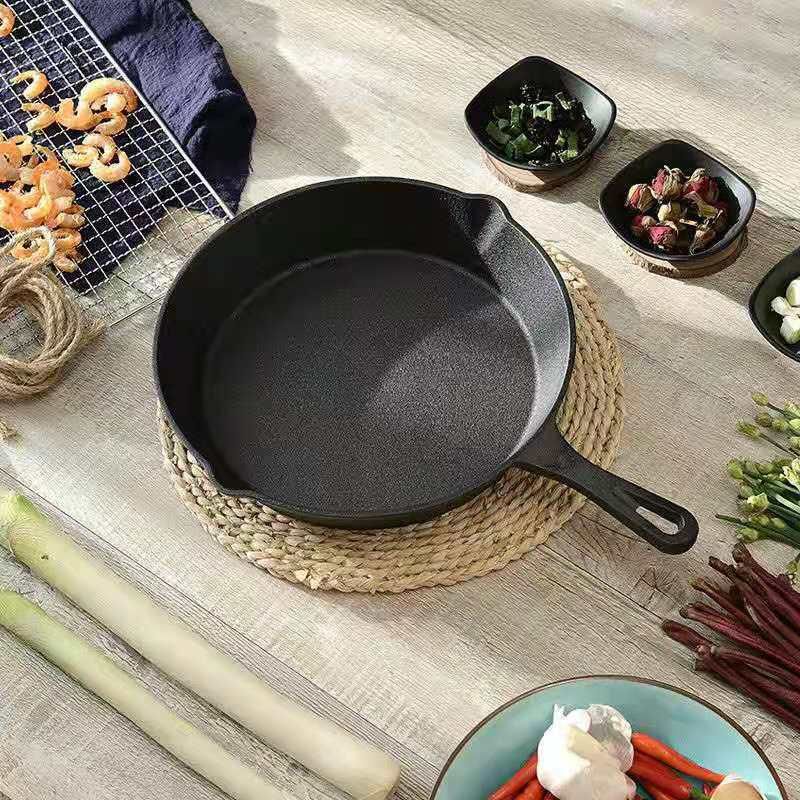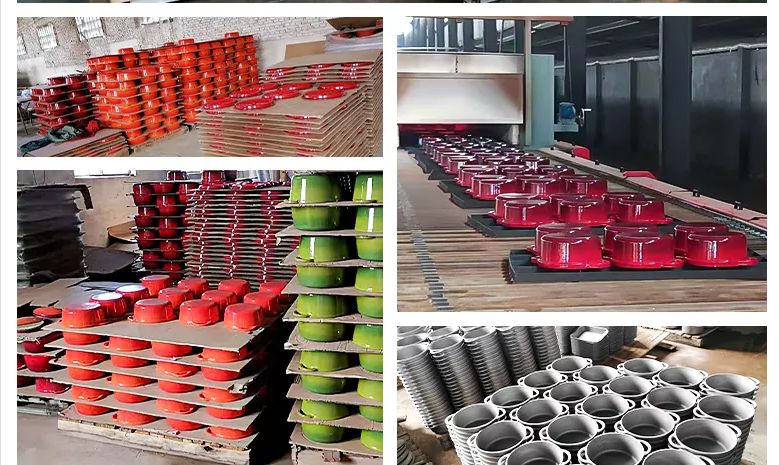Speaking of the iron pot, you should be familiar with it, it is a kitchen utensils that has been used since ancient times. It is very traditional and very common. Many people have the misconception that all iron pots are the same, but they are not. If according to different processing technology, can be divided into fine iron pot and cast iron pot. Cast iron pot should actually be called raw iron pot, fine iron pot is called cooked iron pot. So what are the differences between the two products? Let’s talk about it
Contrast between the two
The materials of the two iron pots are ferrous compounds, and do not contain harmful substances such as heavy metals. They are safe and non-toxic, and we can use them at ease. In the process of heating, the iron pot is not easy to fall off the problem, the infiltration of iron elements is also beneficial to the body’s digestion and absorption.
The cast iron pot is made of solid model casting by melting gray iron. The heat conduction is slow and symmetrical, but the pot ring is thick, the pattern is not smooth, and it is also very easy to crack. The fine iron pot is made of black and white iron sheet casting or hand-made hammering. It has the characteristics of thin ring, fast heat transfer and delicate appearance. For the general home, the application of cast iron pot is better.
Compared with the fine iron pot, the cast iron pot has an advantage. When the heating temperature exceeds 200C, the cast iron pot will begin to release some heat energy, controlling the temperature of the food at about 220℃. When heating, the fine iron pot will immediately transfer the temperature of the fire to the food, which is not conducive to controlling the temperature of the food.
But the fine iron pot also has advantages, because it is made of fine iron, less residue, therefore, the heat conduction is more symmetrical, not easy to happen the sticky pot situation. Second, because the main material is good, the pot can be made very thin, and the temperature inside the pot can be made higher. Third, the level is high, the surface is smooth and clean, and the cleaning work is easy to do.
How to choose and use
First, see whether the pot surface is smooth, but can not request smooth as a mirror, because of the forging process, the pot is irregular light lines. There are defects, small protruding part of the general is iron, the quality of the pot is not large interference, but small cracks on the quality of the pot is relatively large damage, special attention to check when choosing.
Second, uneven thickness of the pot is not very good, you can turn the bottom of the pot upside down, with your fingers against the spherical core of the pot, beat with a hard block. The louder the pot, the more vibration it feels, the better. In addition, the rust on the pot does not necessarily mean that the quality is not good. The rust of the pot indicates that the storage time is long, and the longer the storage time of the pot, the better, so that the internal mechanism of the pot can be more stable, and it is not easy to crack when used.
For the maintenance of cast iron pot, we need to focus on some problems to prevent rust. If it is enamel cast iron pot, then the maintenance way is more free. If it is a pre-seasoned cast iron pot, we need to pay more attention to: when cleaning, do not use strong detergent; At the end of cleaning, dry the inside and outside surfaces of the pot with a dry, soft cloth and place in a dry and well-ventilated area.
Whether it’s a fine iron pot or a cast iron pot, try not to make food that is obviously acidic or alkaline. Because these foods contain acidic and alkaline substances and iron chemical changes, produce some harmful substances, harm the stomach, etc., people may cause poisoning after eating.
Distinction and Comparison
First, fine iron has good ductility, high toughness, can forge the pot relatively thin, cooked iron pot heat transfer fast, and pig iron is brittle, using the casting process to produce raw iron pot, can not produce relatively thin, raw iron pot heat transfer is not as fast as fine iron pot, therefore, if from the perspective of saving fuel and electricity such as fuel and gas to consider, fine iron pot is more suitable than raw iron pot.
Two, for the daily use of food frying iron pot, choose cast iron pot is appropriate. The heat transfer of raw iron pot is generally slower than that of fine iron pot, and the heat dissipation rate is higher than that of cooked iron pot. Therefore, when frying food, raw iron pot is not easy to paste compared with fine iron pot, and the oil temperature is not easy to be too high, which will lead to the coking of food. Raw iron pot surface smoothness is low, there are small gaps, fried food for a long time, will form a layer of carbide film (pot scale) and oil film on the surface, on the one hand can prevent the oil temperature is too high, on the other hand can prevent rust iron pot. Fine iron pot surface smooth, unless fried paste pot, otherwise generally difficult to form pot scale.
After all these comparisons, we should have some basic understanding. Of course, for daily frying, cooking and other requirements, these two products can basically meet. In fact, the choice of cast iron pot or fine iron pot, need to be combined with the different needs of each person to consider, such as weight, such as price, and personal use habits.
Post time: Apr-15-2023






